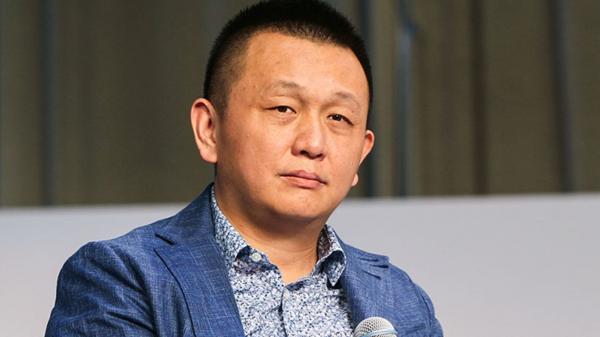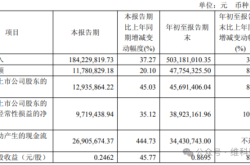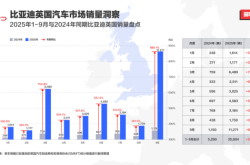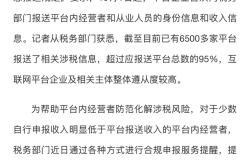Zhu Xiaohu, Once Again Predicting the Future
![]() 04/06 2025
04/06 2025
![]() 594
594

Many are familiar with Zhu Xiaohu, likely still owing to his investment in ofo during the shared bike boom.
However, delving deeper into Zhu Xiaohu's success with shared bike investments, it becomes apparent that his predictions about their future development were remarkably accurate.
As we step into 2025, amidst the surge of AI advancements, Zhu Xiaohu has once again, with his incisive style, predicted the future of humanoid robots.
On March 28, citing "unclear commercialization," Zhu Xiaohu announced his withdrawal from investments in humanoid robots, despite the industry's high consensus. This decision was seen by many as a "retreat declaration," raising concerns about its impact on future funding plans for humanoid robots.
In response, many humanoid robot entrepreneurs retaliated against Zhu Xiaohu's comments.
For instance, Zhao Tongyang, CEO of Zhongqing Robots, believed Zhu Xiaohu's remarks were "short-sighted," "negating the future based on the present," adding, "He is a very successful and astute businessman, but many entrepreneurs are not."
Even Zhang Ying from Matrix Partners China, who once stood on the same side as Zhu Xiaohu, took an opposing stance. He questioned whether Zhu Xiaohu's remarks would damage the industry's reputation and bluntly stated that they might affect his future investment opportunities in the robotics field, saying, "Mr. Zhu, don't make a fuss."
While Zhu Xiaohu's remarks sparked criticism in the venture capital circle, when viewed in the context of his past investment style in shared bikes, it becomes evident that his comments hold a certain degree of correctness.
Overvalued: Humanoid Robots No Longer Have "Angel Rounds"
Investments in humanoid robots often initially strike people as overvalued. Valuations once seen only in the A or even B rounds of funding during the Internet era are now commonplace in the humanoid robot field.
According to Xu Huazhe, co-founder of Xinghai Atlas, raising $100 million is a minor threshold for humanoid robot companies.
On March 26, Tashizhi Navigation announced a $120 million funding round, backed by investors such as BlueRun Ventures, Qiming Venture Partners, Lenovo Capital, and Hillhouse Capital, along with industrial resources. Notably, Tashizhi Navigation had only been established for 50 days.
On the same day, Amiro Robots completed a seed round of funding worth hundreds of millions of yuan, led by Anker Innovations, with follow-on investments from Z Fund and Venturepeak Capital.
A few days later, Qianxun Intelligence completed a pre-A round of funding worth 528 million yuan, led by Prosperity7 Ventures P7, a subsidiary of Aramco, with significant participation from multiple industrial capital firms like China Merchants Venture Capital, GF Securities Capital, Jingya Capital, Oriental Fortune Capital, and China Hicon Capital. Existing shareholders included established RMB funds like Fortune Capital. Notably, this company had been established for just over a year.
It's worth noting that many other humanoid robot concept companies obtained funding around the time of Zhu Xiaohu's remarks, with substantial funding amounts.
It's no exaggeration to say that humanoid robots are no longer seeking mere seed or angel round funding amounts from the Internet era but rather more frequently A or even B round funding amounts.
Behind these huge funding amounts lies the reflection of the high valuations of these humanoid robots. For many newly established humanoid robot companies still on paper, such high valuations actually represent an increase in capital costs for investment institutions. It's fair to say that the concept of "angel rounds" no longer exists in the current humanoid robot industry.
Under High Investments, Humanoid Robot Commercialization Faces Hurdles
Despite the high investment threshold for humanoid robot startups, the commercialization path of humanoid robots is not as robust as the funding amounts suggest.
Interest in humanoid robots has surged thanks to the rise of Deepseek and the impressive appearance of Unitree Robotics on the Spring Festival Gala. However, it's important to recognize that these two companies are among the few out of hundreds of humanoid robot companies.
Multiple founders and investment and financing heads of humanoid robot startups stated that investors in the humanoid robot sector can be broadly classified into three types: those focused on underwater projects that have existed since 2022 and primarily target academic entrepreneurs; those focused on hard technology investments, following the trend from autonomous driving to large models and then to embodied AI, less affected by sector fluctuations and accounting for a high proportion; and those who have only recently become more interested in humanoid robots due to their rising popularity, with a growing number of such institutions, some of which are guiding funds.
Regardless of the type of humanoid robot company, they all share a common weakness: a lack of a clear commercialization path.
As an industry leader, Unitree Robotics achieved profitability years ago. However, for other humanoid robot startups, finding a similar commercialization path may require more time for exploration and practice.
When the commercialization progress of humanoid robots is not smooth, these startups inevitably rely on funding to continue their development. However, in such a scenario, the high valuations ultimately put many investment institutions at a relatively high risk when investing in humanoid robots.
For Zhu Xiaohu, perhaps he saw this problem and, purely from an investment perspective, discerned that the development roadmap for humanoid robots to continue raising funds no longer holds certain development potential. Therefore, he began to criticize humanoid robots and withdrew from investments in humanoid robot startups.
Today's Humanoid Robots, Yesterday's Shared Bikes
For investors like Zhu Xiaohu, their investments in any project or layout in any sector are often thought of and viewed in terms of the industry's and sector's growth potential and return on capital.
If we summarize and define Zhu Xiaohu's current investment in humanoid robots, it is akin to his past investment in shared bikes.
In a sense, Zhu Xiaohu invested in shared bikes because he foresaw their later popularity and the resulting return on capital. Now, his investment in shared bikes is more about seeing the return on capital from them.
According to Zhu Xiaohu, a humanoid robot project exited at a B round valuation of $300 million, with a book return rate of 300%, but the company's actual annual revenue was only $8 million, resulting in a cash flow gap of $27 million.
If such a huge gap persists, and if later humanoid robot companies cannot fill this gap through their own commercialization profits or obtain higher valuations through continuous funding in the capital market, then the development of humanoid robots is bound to face increasing challenges.
With the rapid development of AI, everyone believes in the certainty of embodied intelligence's future. Especially as large models continue to evolve logically, humanoid robots will be an ultimate form.
Against this backdrop, the investment logic for humanoid robots is no longer that of the Internet era but rather relies more on long-term accompaniment and empowerment to achieve better returns on capital investments.
For Zhu Xiaohu, he simply uses the investment logic of the Internet era to view investments in humanoid robots, concluding that current humanoid robots no longer have investment value.
Whether there is a bubble in humanoid robots as Zhu Xiaohu claims or not, investments in this sector can no longer be judged solely based on traditional logic.
Finding an investment logic and model that fits this sector may be the key to truly guiding the industry's development onto a healthy track.
When Zhu Xiaohu remarked that the "commercialization path of humanoid robots is unclear," he seemed to have predicted the future of humanoid robots. For investors like Zhu Xiaohu and humanoid robot entrepreneurs alike, finding a development model that suits them and is accepted by current investment institutions may be the key to breaking out of past development paths and vicious cycles.
Zhu Xiaohu, once again predicting the future.
This signifies not just a major adjustment in the investment logic of investment institutions but also a significant reshuffle in the entrepreneurial logic of entrepreneurs in the AI era.








